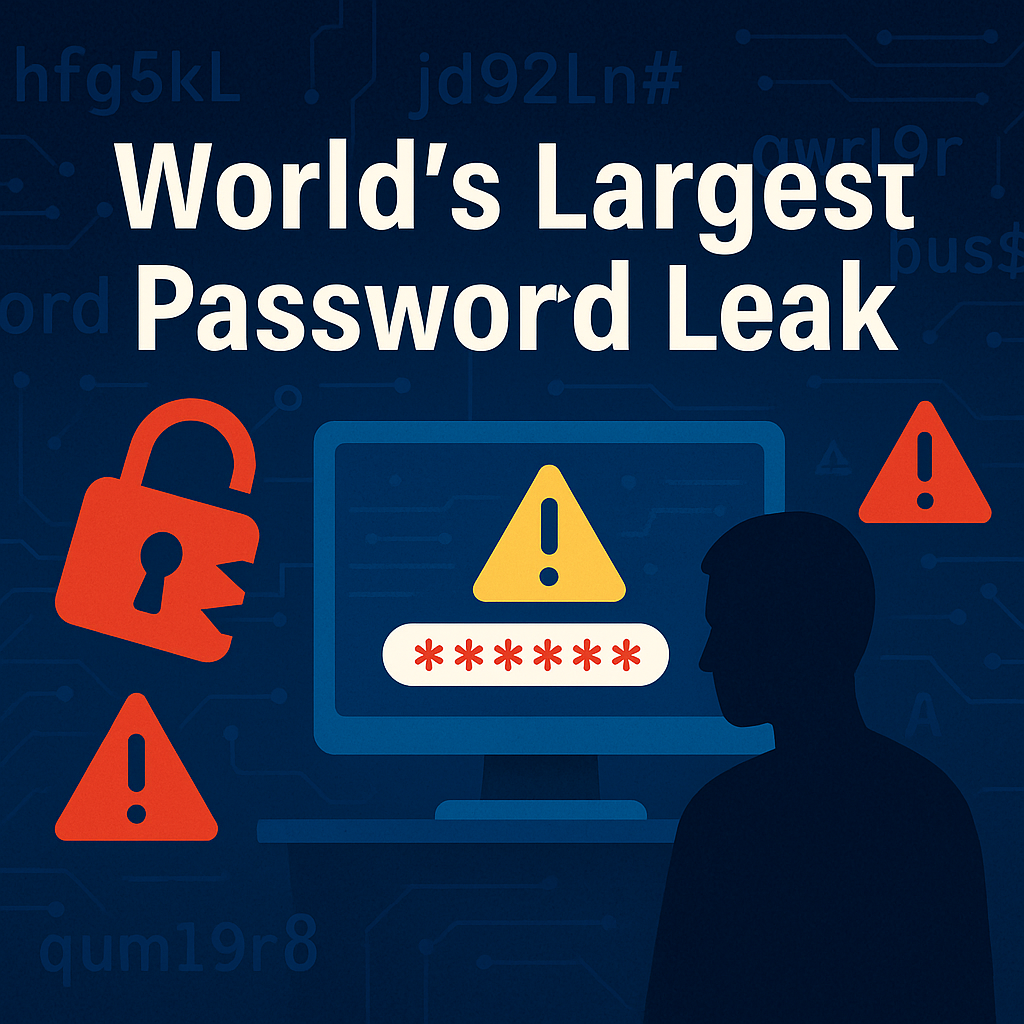The cybersecurity world has just witnessed its largest-ever data breach, involving a massive leak of passwords. More than 16 billion login credentials—including those for giants like Apple, Google, Telegram, Facebook, and many others—have surfaced online in a data breach of truly unprecedented scale. For individuals and organizations everywhere, this event sets a new high-water mark for the risks of our digital age.
How Did the Leak Happen?
Unlike single-company hacks, this breach is the culmination of years of cybercriminal activity compiled into a single enormous archive. According to researchers at Cybernews, 30 massive datasets—some containing as many as 3.5 billion records—were combined and made publicly available. Most of these credentials are organized by website, username, and password, forming “supermassive” datasets that are now circulating on cybercrime forums.
What’s even more alarming is that nearly all of the leaked credentials had not been previously reported. Only one subset of 184 million records was already known. The rest? They’re hitting the market for the first time, mostly thanks to a new generation of malware known as infostealers.
The Role of Infostealer Malware
If you’ve read our recent post about the Marks & Spencer Data Breach, you know how targeted hacks can impact even the most trusted brands. However, the 16 billion credential leak differs in scale and method. Infostealers—stealthy malware programs that infect both Windows and Mac computers—are at the heart of this new breach. They harvest everything from usernames and passwords to browser cookies and crypto wallets, then silently upload these “logs” to dark web markets.
These malware-driven data dumps are incredibly organized, making it easy for cybercriminals to automate attacks, hijack accounts, and launch phishing scams on a global scale.
Who Is at Risk?
With 5.5 billion people using the internet, the sheer number of records means the average user could have several accounts exposed, even if they’ve never heard of some of the services. The breach includes credentials for social media, developer platforms, government portals, and VPN services, putting both individuals and businesses at risk.
Security researchers are calling this incident “a blueprint for mass exploitation.” For hackers, these billions of fresh, organized credentials are a goldmine for everything from identity theft to account takeovers.
What Should You Do Now?
Given the scope of this leak, now is the time to act:
- Change your passwords, especially on important accounts like email, banking, and social media.
- Always use unique, strong passwords for each site—consider a password manager if you’re overwhelmed.
- Enable multi-factor authentication (MFA), ideally using an authenticator app (not just SMS).
- Before changing passwords, scan your devices for malware to ensure new credentials aren’t immediately stolen.
Curious if your email or passwords have been exposed in this or previous leaks?
Please don’t leave it to chance. Try our free Am I Hacked? Email Leak Checker—it takes seconds to find out if your accounts are at risk.
Want even deeper insight? Our premium report uncovers every breach linked to your address and guides you through the next steps for recovery and protection.
What Can Organizations Do?
For organizations, this breach serves as a stark reminder that cybersecurity is an ongoing challenge. Moving to a zero-trust security model, enforcing strong password policies, and requiring multi-factor authentication (MFA) for all employees are no longer optional. Monitoring for compromised credentials and ensuring cloud and network resources are correctly configured must become part of every company’s routine.
The Road Ahead
News of this breach broke in mid-June 2025, but its impact will stretch well into the future. As with past incidents, such as the Marks & Spencer breach, it serves as a clear reminder: no one is immune, and digital vigilance is essential.
Take this opportunity to review your digital habits, help those around you stay safe, and remember—when it comes to security, a single weak password can be all it takes.


Leave a Reply